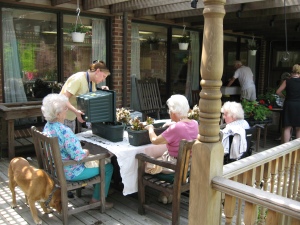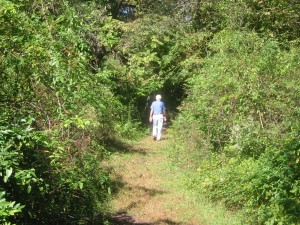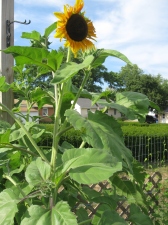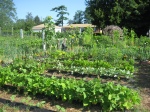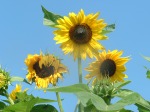Filed under: Aging in place, Alzheimer Residence, Assisted Living, Baby Boomers, Community Gardens, Continue Care Retirement Communities, Gardening, Healing Gardens, Horticultural Therapy, Hospice Residence, Landscape Architecture, landscape design, Meditation Gardens, Restorative gardens, Senior Environment Assessment, Senior Living, Successful Aging, Sustainability, Sustainable design, Therapeutic Gardens
An article in today’s USA Today by Craig Wilson reminds me how important the porch is for all of us. Craig reminisces on growing up and spending time on his parents front porch. His stories remind me of spending my own childhood on the back porch of my parents home. All our summer meals took place on the porch. In fact, most all activities were moved to the porch during the summer months. There were many summer nights spent sleeping outside on the porch.
The porch is one of those iconic architectural elements that we all can relate to and have fond memories of spending time on. It works so well because it offers us protection from the elements. The porch shelters us from the hot summer sun and it is a place where we can sit outside to listen to the rain. It acts as a stage where we can entertain our friends. And it is an observation area where we can check out what is happening in the neighborhood. The porch makes us feel safe because we are close to the house and do not have to venture too far into nature.
I am reminded of how important an architectural element the porch is for all of us. A porch was included in the garden design at Medford Leas Continuing Care Retirement Community. The porch was constructed off of the recreation room and it has been an essential component of this courtyard garden. It is host is daily activities, including cookouts, holiday parties, concerts, garden classes, reading groups, etc. etc.
I am thinking about a comfortable chair, something to eat and maybe a good book to read on my porch. You can include a ceiling fan, maybe some music and a cooler filled with drinks and you may never have to leave! Who could ask for anything more! Enjoy!
Filed under: Aging in place, Alzheimer Residence, Assisted Living, Baby Boomers, Community Gardens, Continue Care Retirement Communities, Gardening, Healing Gardens, Horticultural Therapy, Landscape Architecture, landscape design, Meditation Gardens, Organic gardens, Restorative gardens, Senior Environment Assessment, Senior Living, Successful Aging, Sustainability, Sustainable design, Therapeutic Gardens
“Spending more time in nature might have some surprising health benefits.” This and other information can be found in the recent New York Times article “The Claim: Exposure to Plants and Parks Can Boost immunity” by Anahad O’Connor (July 5, 2010). Stress reduction, increased immune function, lower concentration of cortisol, lower pulse rate and lower blood pressure are just a few of the many health benefits associated with our interaction with nature.
As the article describes, “Exposure to plants and trees seems to benefit health.” It is good to see that articles like this are reaching main stream America and beyond. We have know for years that contact with nature helps us recover from illness. Now the studies are proving that daily contact will make us healthier – and save healthcare dollars, too! The article can be found at
Filed under: Aging in place, Alzheimer Residence, Assisted Living, Baby Boomers, Community Gardens, Continue Care Retirement Communities, Gardening, Healing Gardens, Horticultural Therapy, Hospice Residence, Landscape Architecture, landscape design, Meditation Gardens, Organic gardens, Restorative gardens, Senior Environment Assessment, Senior Living, Successful Aging, Sustainability, Sustainable design, Therapeutic Gardens, Uncategorized
The current issue of Garden Design magazine (Jul/Aug 2010) has a great article on Healing Gardens and the work of Clare Cooper Marcus. This is a definite read for anyone who has an interest in the healing powers of gardens and why nature can play an important role in the healing process. The article chronicles the work of Ms. Cooper
Marcus and how she has been a leader in helping to define how these spacial gardens should be designed.
Ms. Cooper Marcus talks about how healing gardens should be as much, if not more, about plants and less about creating abstract designs. The gardens should “provide a sense that you are in a garden and not a plaza or indoors.” The garden, as Clare explains in the article, should be designed to include four essential elements: exercise, social support, a sense of control and a distraction of nature. These and other important design ideas are discussed in the article.
The article may be found in the magazine starting on page 73 and additional information at the web site http://www.gardendesign.com
Filed under: Aging in place, Alzheimer Residence, Assisted Living, Baby Boomers, Community Gardens, Continue Care Retirement Communities, Gardening, Healing Gardens, Horticultural Therapy, Hospice Residence, Landscape Architecture, landscape design, Meditation Gardens, Organic gardens, Restorative gardens, Senior Environment Assessment, Senior Living, Successful Aging, Sustainability, Sustainable design, Therapeutic Gardens, Uncategorized
British researchers looked at ten various studies on the effects of activities performed outside in nature. Activities such as walking, cycling and gardening had positive effects on the 1,200 people surveyed. According to Jo Barton, co-author of the study, “There would be a large potential benefit if people were to self-medicate more with green exercise.” The largest positive health changes occurred when people exercised in the outdoors.
The article, “What is the Beat Dose of Nature and Green Exercise for Improving Mental Health” can be found at the link http://pubs.acs.org/stoken/presspac/presspac/full/10.1021/es903183r
Filed under: Aging in place, Alzheimer Residence, Assisted Living, Baby Boomers, Community Gardens, Continue Care Retirement Communities, Gardening, Healing Gardens, Horticultural Therapy, Hospice Residence, Landscape Architecture, landscape design, Restorative gardens, Senior Living, Successful Aging, Sustainability, Therapeutic Gardens
There is a great article on horticultural therapy by Anne Marie Chaker in today’s Wall Street Journal. The article, “When Treatment Involves Dirty Fingernails”, describes several hospital based programs around the country and offers information from Roger Ulrich, Ph.D.
As the article indicates – “The path to better health may wind through the garden.” The article can be found at – http://online.wsj.com/article/SB10001424052702304620304575165831058222608.html?mod=djemLifeStyle_h
Filed under: Aging in place, Alzheimer Residence, Assisted Living, Baby Boomers, Community Gardens, Continue Care Retirement Communities, Gardening, Healing Gardens, Horticultural Therapy, Landscape Architecture, landscape design, Meditation Gardens, Organic gardens, Restorative gardens, Senior Environment Assessment, Senior Living, Successful Aging, Sustainability, Sustainable design, Therapeutic Gardens
Everyone has a garden story to tell. Start to mention an interest in gardening and it seems that people will share their adventures in nature. For example, I was on a flight back from San Diego and had the pleasure of sitting next to a woman who had several garden stories to tell. She and her husband live outside of Houston on a one acre parcel and have a passion for growing fruit trees. The winter was not very kind because a frost threatened their grapefruit trees. They had to pick all of the fruit, before it ripened, or it ruined by the frost.
I relate this story mainly because this gardener was even more concerned with how she and her husband will be able to maintain their fruit trees as they get older. They are currently in the 50’s and want to continue to live in their home for the rest of their lives. One of their concerns is how they will be able to work in their garden and care for their fruit trees and vegetable garden. Watering, pruning, weeding and all of the things that they need to do to help the garden thrive.
There is a lot to consider when we talk about aging-in-place, especially as it relates to the garden and yard in general. There is a growing need to help people adapt their yards to become age friendly outdoor environments. This will require an assessment of the yard to help people to continue to fully use their yard. In the case of the woman from Houston, installing a drip irrigation system; applying mulch to control weeds and retain moisture; planting disease resistant varieties of fruit trees; are a few of the ways people can help make it easier to create age appropriate gardens. It may also be possible to share the work with neighbors in exchange for a share of some of the produce when it ripens. Gardeners want to keep working in their garden and we need to find ways to help make it easier for everyone.
Filed under: Aging in place, Assisted Living, Baby Boomers, Community Gardens, Continue Care Retirement Communities, Gardening, Healing Gardens, Horticultural Therapy, Hospice Residence, Landscape Architecture, landscape design, Meditation Gardens, Organic gardens, Restorative gardens, Senior Environment Assessment, Senior Living, Successful Aging, Sustainability, Sustainable design, Therapeutic Gardens
Spring is upon us and we are itching to get back into the garden. The winter months, especially after the many storms we have experienced, have left us much to do. One of our chores is to assess the condition of our trees. The snow has caused some branches to split and/or fall. There may also be dead branches that should be removed. Or, we may want to open up the garden for some additional sunlight.
Unless you want to maintain a formal garden setting, most trees look better when they are left in a natural form. The best time to assess the ‘structure’ of the tree is when it is dormant. It is easier to clearly see what branches may need to be pruned when there are no leaves on the tree. To keep the natural form and appearance of a tree, do not try to shape it into a complete sphere or ball. That is not what nature intended.
One critical aspect of tree care is to never cut the central leader of the tree. Most all trees have a central spine that is essential to the structure of the tree. Again, this should never be cut. This will impair the life and healthy growth of the tree. It is better to determine the ultimate height of a specific tree before it is planted, rather than trying to control the height of a tree after it has been installed. A little research will save time and the creation of disfigured tree.
A few general rules to consider when tending to the care of a tree include the following conditions. Remove dead twigs and branches to prevent further problems from spreading. Remove any new shoots that emerge from the area around the trunk of the tree. Remove any branches that are crossing which may cause a wound from the friction of the branches when they move in the wind. A light pruning is recommended after the leaves of the trees appear. A ‘hard’ or more severe pruning is best to do when the tree is dormant (winter months).
Trees are the backbone any garden and landscape. We need to nurture and respect these special plants. They live a long time, sometimes hundreds of years, and our care can help to make sure that they live even longer.
Filed under: Aging in place, Alzheimer Residence, Assisted Living, Baby Boomers, Community Gardens, Continue Care Retirement Communities, Gardening, Healing Gardens, Horticultural Therapy, Hospice Residence, Landscape Architecture, landscape design, Meditation Gardens, Organic gardens, Restorative gardens, Senior Environment Assessment, Senior Living, Successful Aging, Sustainability, Sustainable design, Therapeutic Gardens
The Mid-Atlantic Horticultural Therapy Network of the American Horticultural Therapy Association was an exhibitor at the 2010 Philadelphia Flower Show for the first time. The Show is the largest indoor flower show in the world with attendance of over 250,000 people. The horticultural therapy exhibit presented many of the ways in which HT is presented to the various populations served. There were raised planters, adaptive tools, sensory plants and many other aspects of the profession for people to experience.
Comments offered by many of the people stopping by the exhibit were extremely encouraging. People talked about how they were positively affected by their involvement with horticultural therapy while they were in hospital and other instances. They talked about how it had positively impacted family members in a variety of settings. The exhibit even received several awards for display and presentation.
You can read more about horticultural therapy exhibit and the Flower Show at:
Filed under: Aging in place, Alzheimer Residence, Assisted Living, Baby Boomers, Community Gardens, Continue Care Retirement Communities, Gardening, Healing Gardens, Horticultural Therapy, Landscape Architecture, landscape design, Meditation Gardens, Organic gardens, Restorative gardens, Senior Environment Assessment, Senior Living, Successful Aging, Sustainability, Sustainable design, Therapeutic Gardens
We lose muscle as we age. This is a fact. As we get older, our muscles shrink. However, we do not have to sit back and think that there is nothing we can do about it. Exercise can reverse this trend. The old adage, ‘use it or lose it’ takes on even more significance. A story on NPR’s Morning Edition today talks about the studies that are being conducted to show how exercise can help people build new muscle at any age. People in their 80’s who exercise with weights, as an example, increase muscle and get stronger. (A link to the story is below).
So, how does this translate to the garden? When we are outside moving a wheel barrow that is filled with tools or soil, we are in fact weight training. Digging holes for new plants, trimming shrubs, cutting branches, sweeping the walk, moving garden furniture, raking the lawn incorporate bending, stretching, reaching, and other movements that are good for us. The tools we are using act as weights and we are doing two things at the same time. We are working in our garden and simultaneously exercising in a very soothing gym. The result is that we are all rebuilding muscle that has been lost to a natural occurrence called aging. We are also creating a beautiful environment that we can all enjoy.
The garden is therapeutic. We can classify this aspect of gardening as good for our health. The activities listed above, and so many more, can be performed by people at any age. This is the active part of using the garden. We are creating gardens that we can look at and feel good about. We are also creating gardens in which we can exercise and improve our health. The link to the NPR 2-22-10 story can be found at:
http://www.npr.org/templates/story/story.php?storyId=123887823
Filed under: Aging in place, Alzheimer Residence, Assisted Living, Baby Boomers, Community Gardens, Continue Care Retirement Communities, Gardening, Healing Gardens, Horticultural Therapy, Landscape Architecture, landscape design, Meditation Gardens, Organic gardens, Restorative gardens, Senior Environment Assessment, Senior Living, Successful Aging, Sustainability, Sustainable design, Therapeutic Gardens, Uncategorized
There are special collectors for all kinds of items, such as rare coins, subway tokens, Pez dispensers and cow creamers. Well, it should come as no surprise that there are people who collect the seeds from plants. And, there are seed exchanges that you can join too swap the seeds that you have collected.
This is a great hobby for the gardener who would like to grow an unusual variety of tomato or other vegetables and perennials. These plants are not the ones you would typically find in plant catalogs. They are special seeds that have been traded to the seed exchanges. There is typically a fee to join a seed exchange.
This may be just the gift to give for an avid gardener for Valentine’s Day, a birthday or other special occasion. It is a perfect gift for elders in a senior community who have a garden and would like to grow special plants this year.
Today’s edition of the Wall Street Journal contains an article on the subject – http://online.wsj.com/article/SB10001424052748704820904575055181332462128.html?mod=djemLifeStyle_h
